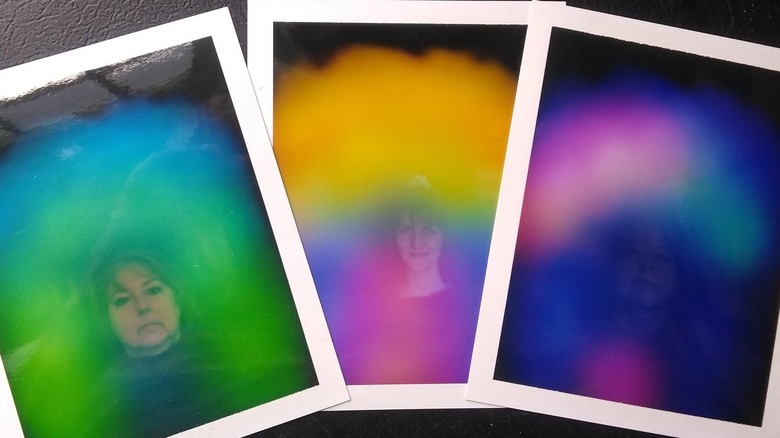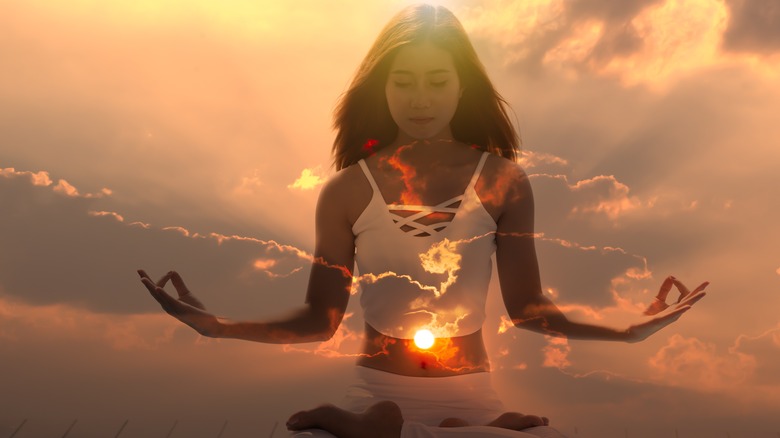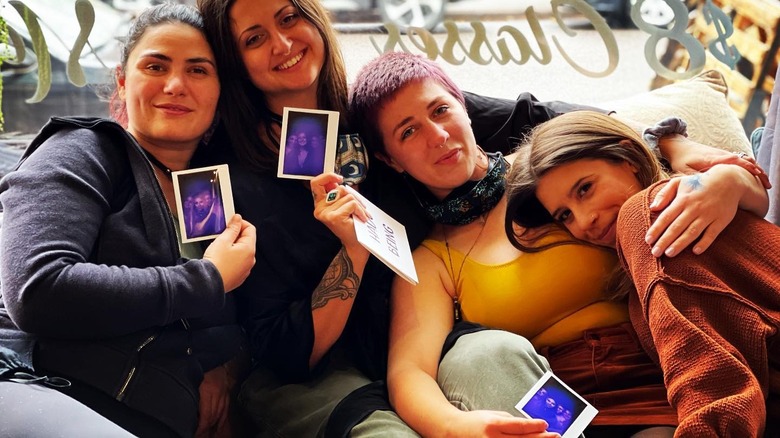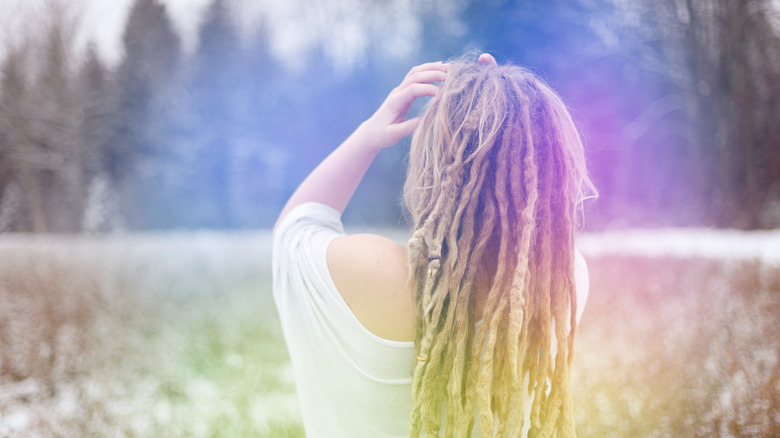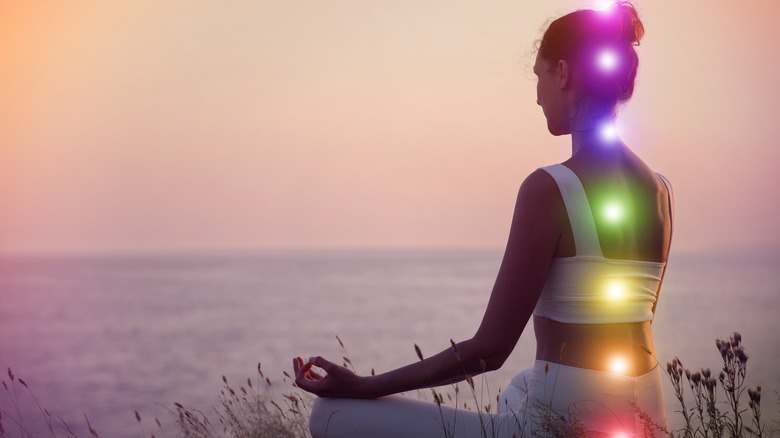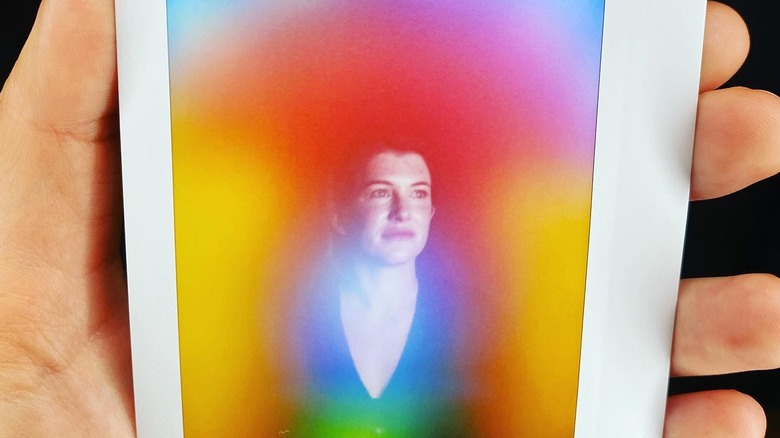What Is Aura Photography, And How Can It Help You Get More In Touch With Yourself?
Modern photography gives us the ability to take crystal-clear pictures of anything physical — in its actual color — in a matter of seconds. But what if we said that you could now take photographs of non-physical things as well? More specifically, if you could photograph your aura?
You may have already seen those portrait photographs. They look like your regular polaroid photographs, but have these wispy, ethereal colors radiating from their subjects. No, it does not mean that they were taken by faulty cameras. These weird (but still aesthetically appealing) pictures belong to a special category known as "aura photography."
Often followed by something called an aura reading done by the photographers themselves, aura photography is said to produce a visual of your unseen energy. It's quite popular among cosmic energy enthusiasts who want more insight into their spiritual selves. Not at all shy of controversy, this form of photography has been the subject of much debate in recent times.
Now you might be wondering what they actually are, and if they actually divulge something about their subjects. And if they do, you will also probably have rational doubts about their accuracy and legitimacy. Fear not, we are here to answer all your questions. But first, you will need to know what an aura is, what it consists of, and if it actually says something about you. The aura is referenced in numerous ancient medical scripts, so the idea isn't a new one at all.
What is an aura?
An aura is generally perceived to be an electromagnetic field of energy that exists around your physical body. Known by several names given to it by different cultures throughout history, your aura is believed to have multiple layers to it, seven of them to be precise. Each one of those layers is supposed to represent a certain aspect of your physical and mental well-being.
Kathryn Grace, founder of California-based Aura Shop, describes the seven layers (or planes) to mindbodygreen like this:
The first layer, known as the physical aura plane, represents your physical health. The emotional aura plane comes next and represents your mood and emotional state. The third layer is the mental aura plane, which represents your thoughts and overall mental condition. Next is the astral body aura plane, the fourth aura layer. It depicts your spiritual energy and well-being. After comes the etheric aura plane, which is a holding place for your psychic capabilities.
The penultimate layer — called the celestial aura plane — stores all your dreams and intuition. The seventh and final aura layer (the causal aura plane) is believed to harmonize all the other layers.
All living things are believed to have auras. Not only humans, but animals and plants, are also surrounded by their own envelope of energy. Reading these auras also says something about them.
What is aura photography?
Aura photography is exactly what it sounds like. It is basically the idea of using a special camera to photograph people — along with their personal auras. The origin story of aura photography stretches way back to 1939. That is when a man named Semyon Kirlian unintentionally invented a form of photography that makes the object of the photograph appear to have some sort of energy hue around it. He believed that these pictures offer some sort of spiritual and psychedelic insight into their object.
A few decades later in the 1970s, Dr. Guy Coggins, an entrepreneur, combined the discovery of Semyon Kirlian and photography technology that had improved so much more by then to create the AuraCam3000 — the first-ever camera that claimed to capture peoples' auras on film. It was eventually upgraded and called the AuraCam6000. Fun fact: It is the camera that is still being used by aura photographers today.
The legitimacy of aura photography has neither been proven nor disproven as of yet. Is it just a scam, or an actual honest visual depiction of a living being's aura? There are claims supporting both the latter and the former, but the fact remains there is not enough scientific evidence as of yet to arrive at a definite conclusion.
How aura photography works
AuraCams consist of a camera connected to two hand plates made out of metal. When you take an aura photograph, you must place your hands on these hand plates while the camera captures your portrait.
Eileen Lee, founder of Detroit-based photography project AURA AURA tells Stylecaster that "The hand plates sense the vibrational frequency that is coming from you, through the meridian points in your hands, and sends all that information to the camera".
The camera system collects the data coming in from the hand plates and decides the specific color pertaining to the aura of the person being photographed — i.e., you. Then the camera displays your auric state as a colorful field around your body.
The result is a picturesque self-portrait of you with these soft clouds of vibrant colors swirling around. It is believed that these colorful lights in your picture are your aura, captured in real-time. Apparently, these colors can differ from individual to individual and actually reveals something about you as a person. The colors on the left side of the picture are believed to be a representation of your past aura that you just left behind and the colors on the right are believed to be an indication of your aura in the near future.
Aura photography is usually accompanied by an aura reading of your brand-new aura photograph to let you know what those colors actually mean.
What do different aura colors mean?
It is stressed that there are no bad colors in aura photography. The colors simply indicate the positive or negative aspects of your mood.
If your aura photograph shows you surrounded by red color, it means that you are stable, confident, and well-grounded. A green or pink-tinged aura photograph signals that you are loving and compassionate and also have a very forgiving nature. If you have a blue aura, it reveals your tendency to be a free thinker, full of intuition and spirit.
Your aura photograph might depict you surrounded by the color orange. This indicates that you have a considerate, thoughtful nature while also being independent and adventurous. A purple aura signifies the fact that you are highly intelligent and wise. To your peers, you might be something of an intellectual. The color yellow showing up around your body on an aura photograph is a sign that you are friendly, optimistic, and creative. You are also very curious as a person.
A black aura is a possible, albeit rare, appearance in aura photographs. It is one of the few colors that represent negative energy. According to some, a black aura is a surefire sign that you have negative emotions that severely affect your spirit. However, your aura color is not permanent. The aura photograph simply captures your aura color at that moment. The aspects of your aura absolutely can change from time to time, and with it, its color changes as well.
Is aura photography worth it?
We've explored what aura photography is, how it works, and how to decipher what it means.
No camera, regardless of how expensive it is, can capture the real aura of a person. Companies who produce aura cameras themselves admit that this feat is impossible to achieve — and not without reason, since an aura is simply an invisible electromagnetic field. They also clarify that the camera is designed to view just the spiritual aura and is not to be used for diagnosing any physical or mental problems.
It is also crystal clear from the description of an aura camera's inner workings that the colors are not simply captured by the camera, but added onto the original Polaroid by the camera. This is based on the subject's energy readings collected through the hand plates. The energy reading process also sparks its fair share of controversy.
There may not be any conclusive scientific evidence but you can still try it for yourself and see. You can do your own research by analyzing the colors on your aura photograph and seeing if the reading relates to how your life's going at the moment.
If you discover that it does, great! You'll get to know more about yourself and it can also help you figure out what makes you happy and what doesn't. Worst comes to worst, you'll still have a cool picture for your Instagram.
